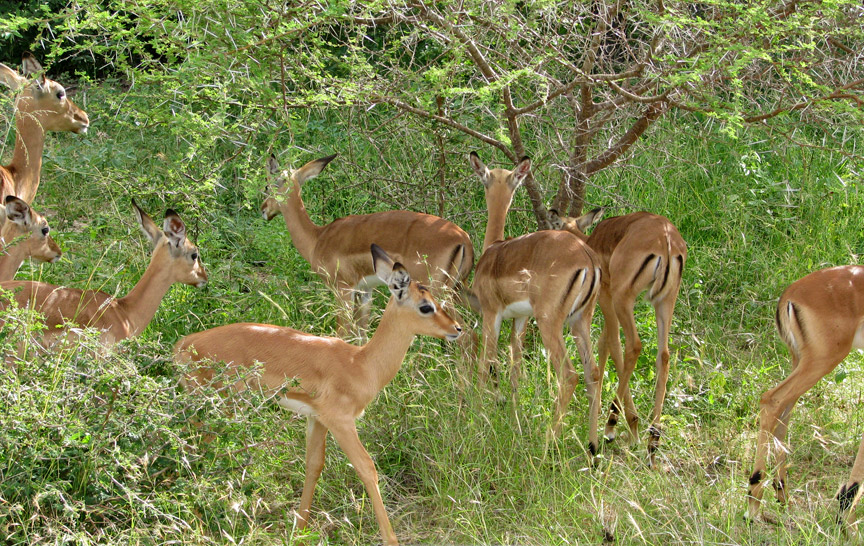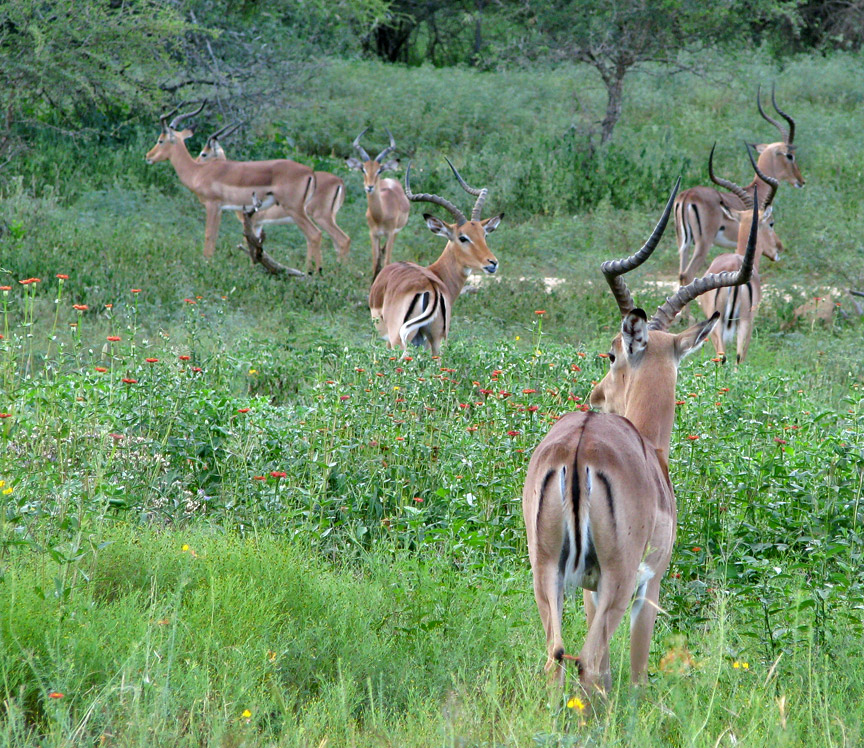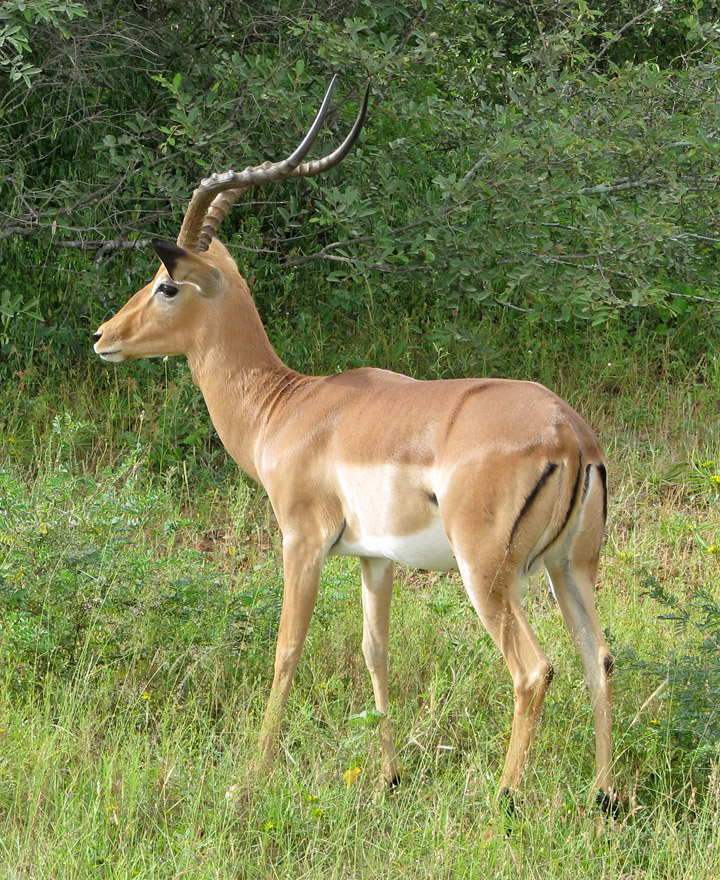

Impala

Impala ram from the Kruger National Park, South Africa.
An impala (Aepyceros melampus Greek aipos "high" ceros "horn" + melas "black" pous "foot") is a medium-sized African antelope. The name impala comes from the Zulu language. They are found in savannas in Kenya, Tanzania, Mozambique, Namibia, Botswana, Zambia, Zimbabwe, southern Angola, northeastern South Africa and Uganda (the source of that country's capital city's name - Kampala).

Average mass for an Impala is approximately 75 kilograms. They are reddish-brown
in color with lighter flanks, have
white underbellies and a characteristic "M" marking on its rear, which gives it
the popular name "MacDonalds of the Bush. Males have lyre-shaped horns which can
reach up to 90 centimeters in length.

Impala are among the dominant species in many savannas. They can adapt to
different environment by being grazers in some areas and browsers in others.
They graze when the grass is green and growing and browse at other times. They
will browse on formcsgaybs, shoots, seedpods and foliage.
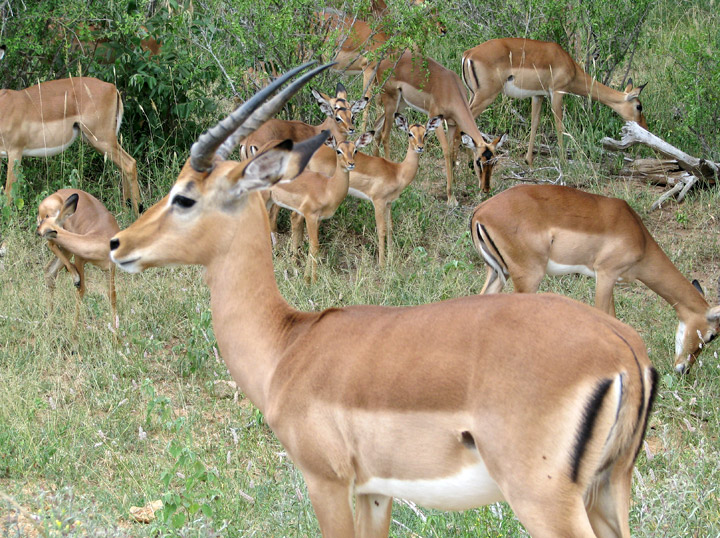
Herds will use specific areas for their excrement. Impala are active during both
day and night and are dependent on water. A herd is normally an indicator of
water close by. Impala can thrive in areas where pure grazers can not survive.
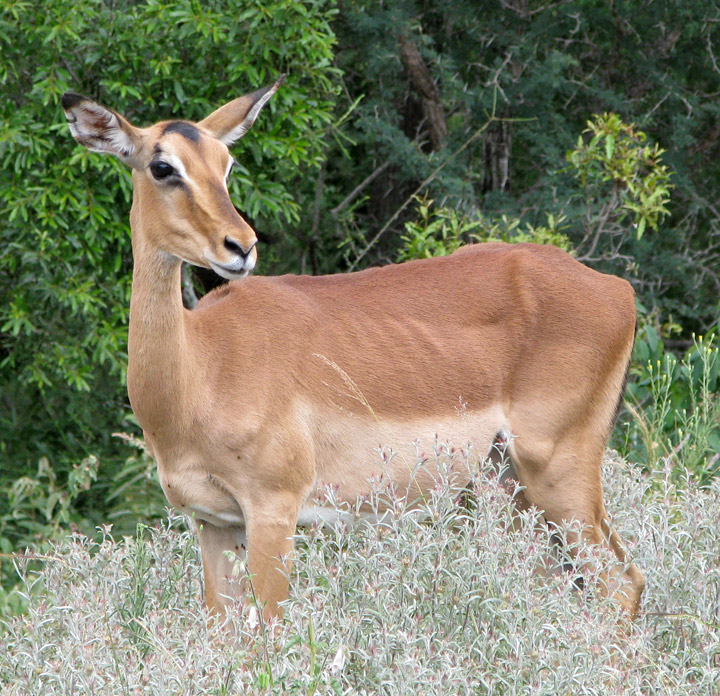
Impala ewe from the Kruger National Park, South Africa.
When frightened or startled the whole impala herd starts leaping about in order to confuse their predator. They can jump distances more than 9 meters (30 feet) and 2.5 meters (8 feet) high. Leopards, cheetah, Nile crocodiles, lions, spotted hyenas and wild dogs prey on impala.
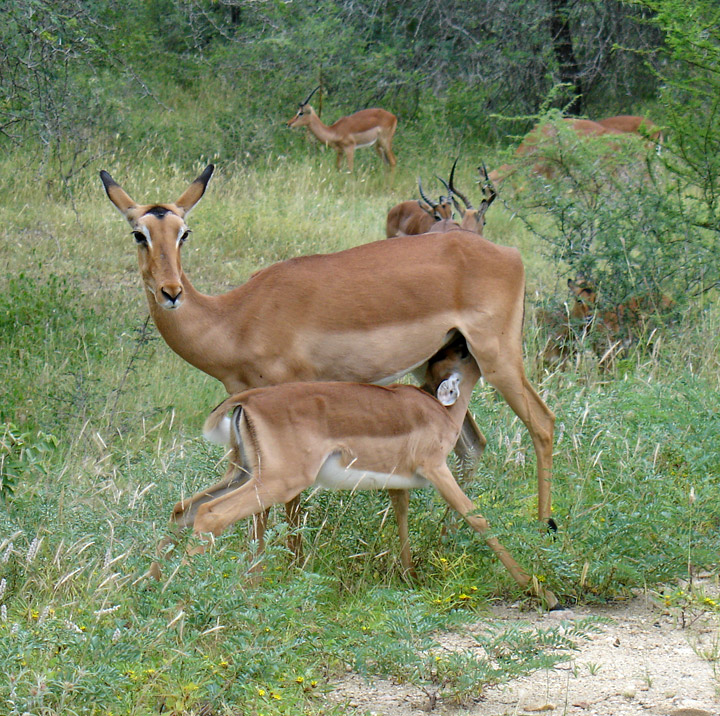
Females and young form herds of up to two hundred individuals. When food is
plentiful, adult males will establish territories and round up any female herd
that enter their grounds and will chase away bachelor males that follow. They
will even chase away recently weaned males. A male impala tries to prevent any
female from leaving is territory. During the dry seasons, territories are
abandoned as herds must travel farther to find food. Large, mixed tranquil herds
of females and males form.
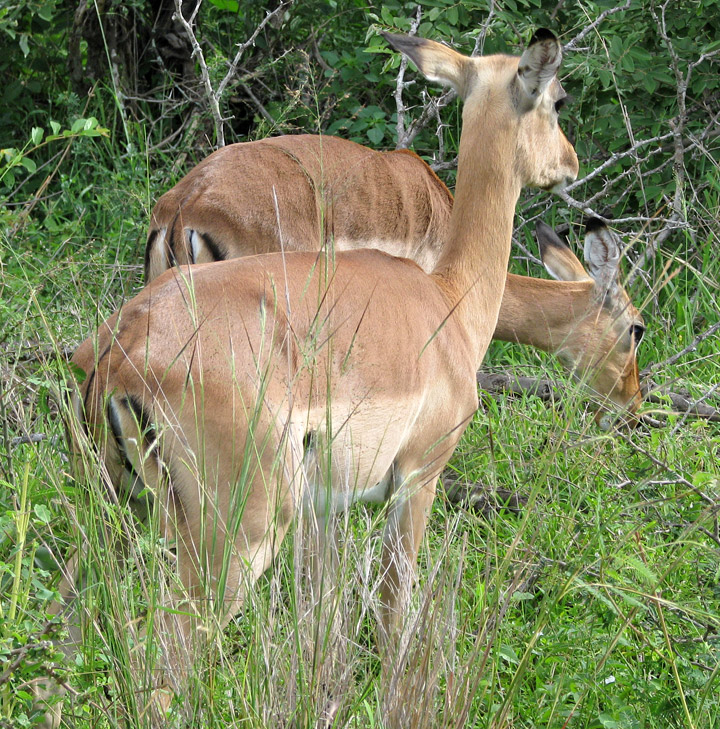
Young male impala who have been made to leave their previous herd form bachelor
herds of around thirty individuals. Males that are able to dominate their herd
are contenders for assuming control of their territory.
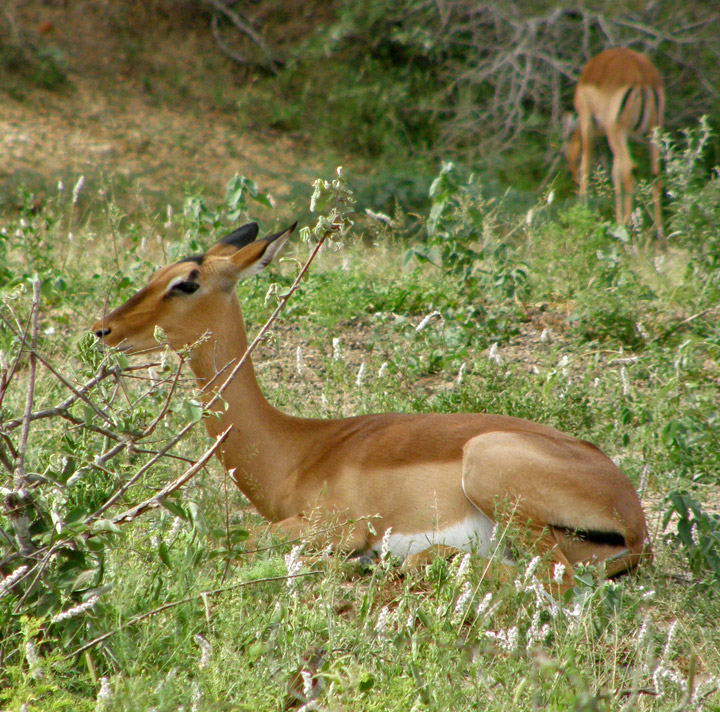
The breeding season of impala, also called rutting, begins toward the end of the
wet season in May. The entire affair typically lasts approximately three weeks.
While young are born after seven months, the mother has the ability to prolong
giving birth for an additional month if conditions are harsh. When giving birth
a female impala will isolate herself from the herd despite numerous attempts by
the male to keep her in his territory. The impala mother will keep the fawn in
an isolated spot for a few days or even leave it lying out in hiding for a
couple days, weeks, or more before returning to the herd. There the fawn will
join a nursery group and will go to its mother only to nurse and when predators
are near. Fawns are suckled for 4 to 6 months. Males who mature are forced out
of the group and will join bachelor herds.
Text from Wikipedia
